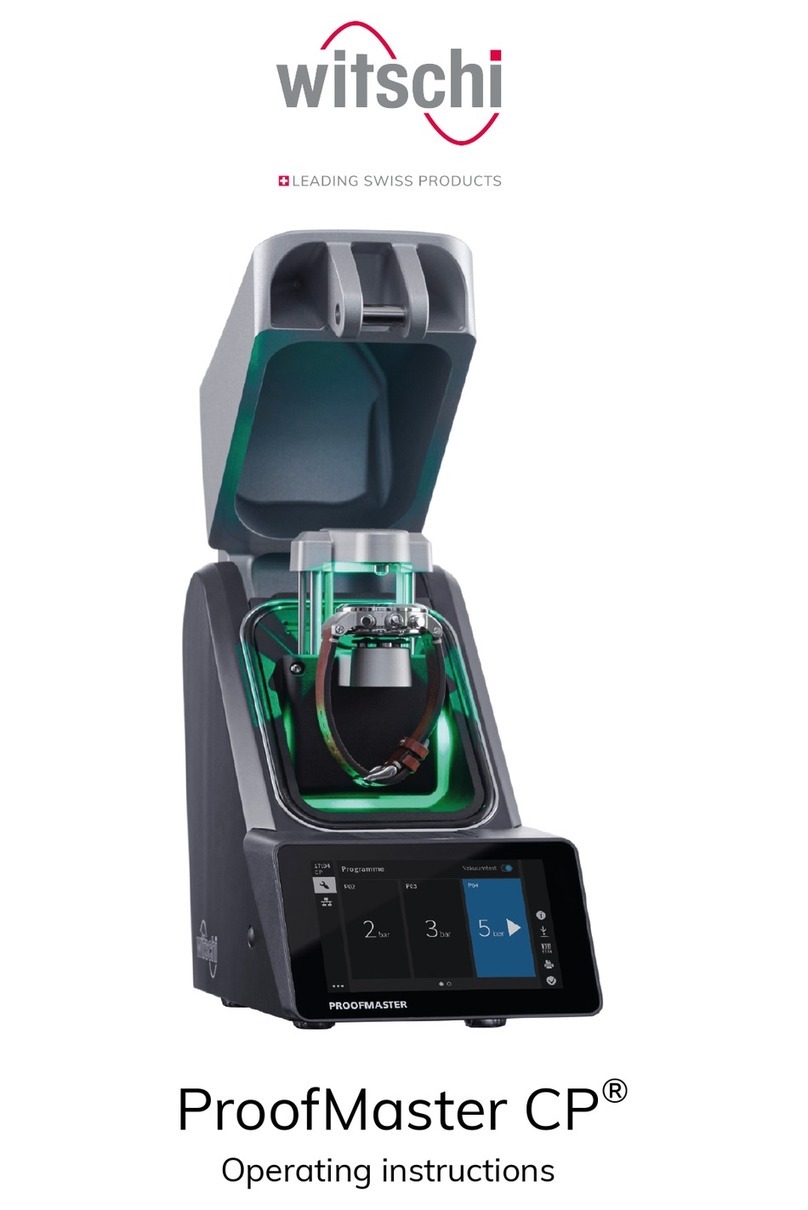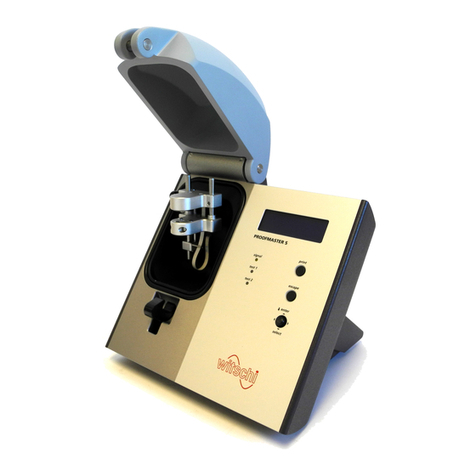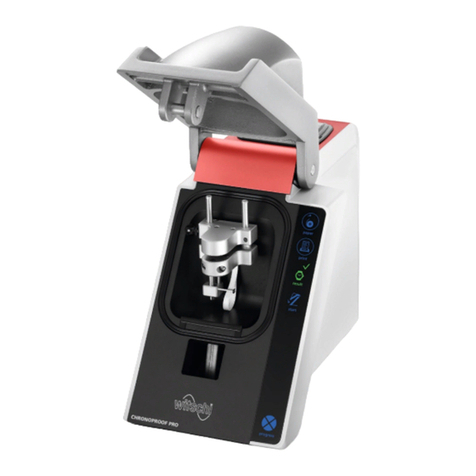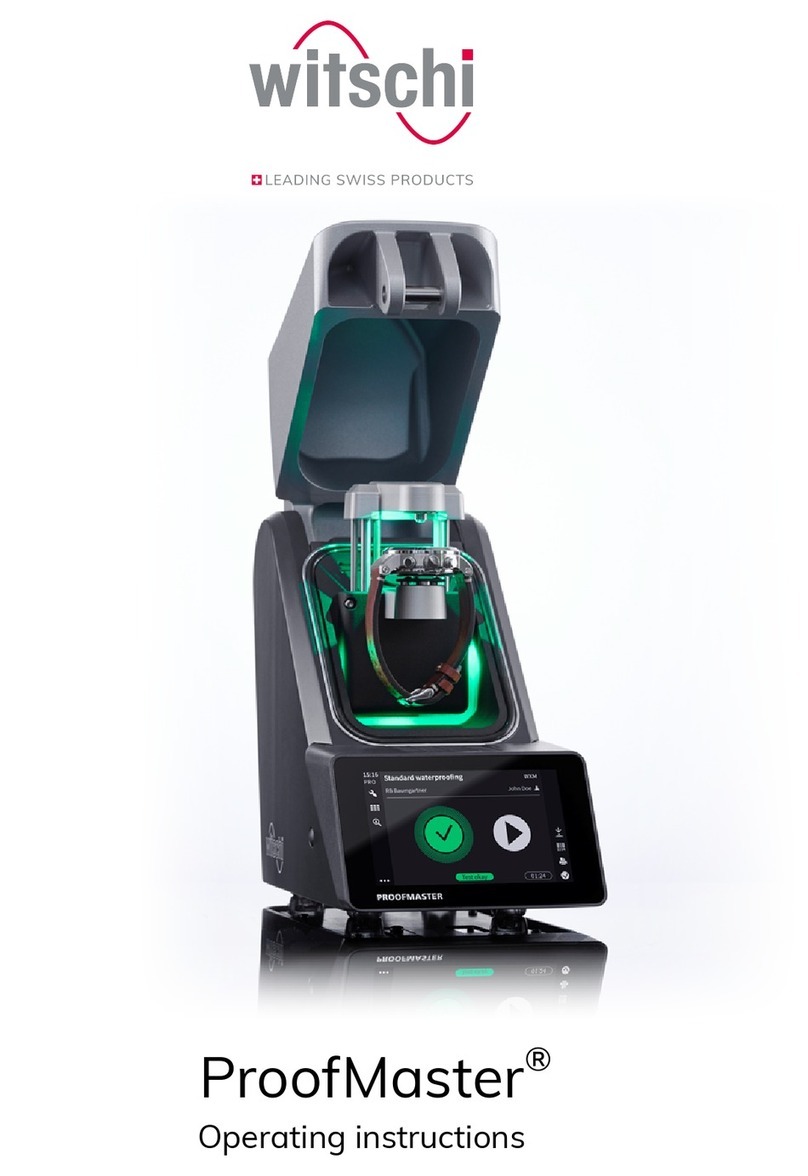Witschi Electronic Ltd Analyzer Q1 Page 3
TABLE OF CONTENTS
1GETTING STARTED..................................................................................................................................5
2FIELD OF APPLICATION...........................................................................................................................5
3OPERATING ELEMENTS AND DISPLAYS...................................................................................................6
3.1 Work Area .............................................................................................................................................. 6
3.2 Rear panel .............................................................................................................................................. 7
3.3 Display Panel.......................................................................................................................................... 8
4COMMISSIONING ...................................................................................................................................8
4.1 Extent of Delivery ................................................................................................................................... 8
4.2 Place of Installation................................................................................................................................ 9
4.3 Mains Connection................................................................................................................................... 9
4.4 Printer Connection.................................................................................................................................. 9
4.5 Language................................................................................................................................................ 9
5GENERAL OPERATION ..........................................................................................................................10
5.1 Switching the Analyzer Q1 On and Off................................................................................................. 10
5.2 Selection of a Measurement Function .................................................................................................. 10
5.3 Parameter Settings ............................................................................................................................... 11
5.4 Help...................................................................................................................................................... 12
6RATE MEASUREMENT OF QUARTZ WATCHES .......................................................................................13
6.1 General Introduction ............................................................................................................................ 13
6.2 Measurement Sequence ....................................................................................................................... 13
6.3 Result Display....................................................................................................................................... 14
7PULSE PARAMETERS.............................................................................................................................15
7.1 General Introduction ............................................................................................................................ 15
7.2 Result Display....................................................................................................................................... 15
8LONG-TIME RECORDING (TRACE MODE) ..............................................................................................15
8.1 Result Display....................................................................................................................................... 15
9MODULE SUPPLY AND CURRENT MEASUREMENT.................................................................................16
9.1 Connecting the Watch .......................................................................................................................... 16
9.2 Current Measurement........................................................................................................................... 17
9.3 Minimum Operating Voltage................................................................................................................ 18
9.4 Watch Acceleration .............................................................................................................................. 19
10 BATTERY TESTING ................................................................................................................................19
10.1 Connecting Points ................................................................................................................................ 19
10.2 Test Sequence....................................................................................................................................... 19
10.3 Result Display....................................................................................................................................... 20
11 GRAPH OF THE MOTOR PULSE..............................................................................................................20
11.1 General Introduction ............................................................................................................................ 20
11.2 Procedure ............................................................................................................................................. 20
11.3 Result Display....................................................................................................................................... 21
12 TEST OF COIL RESISTANCE AND COIL INSULATION ...............................................................................21
12.1 General Introduction ............................................................................................................................ 21
12.2 Procedure ............................................................................................................................................. 21
12.3 Result Display....................................................................................................................................... 22
13 TEST OF STEP MOTORS WITH THE SIGNAL GENERATOR ........................................................................22
13.1 Field of Application .............................................................................................................................. 22
13.2 Procedure ............................................................................................................................................. 22































